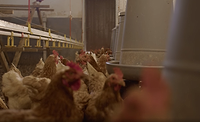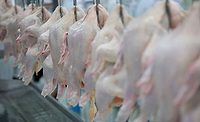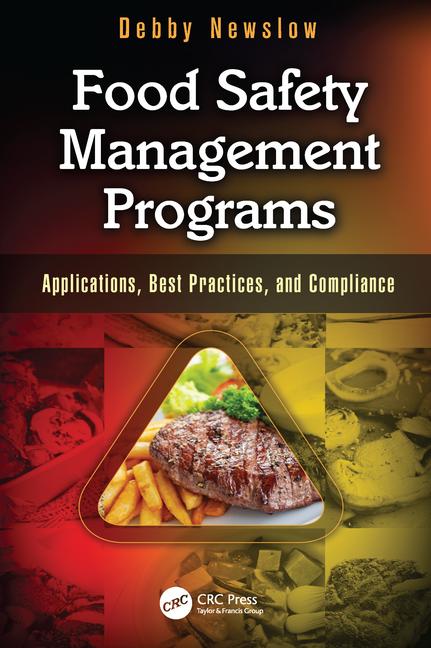From ‘Good’ to ‘Great’—A Story of Transformation with Culture at the Heart
Driving a food safety culture is about more than training, audits and inspections, or testing; fundamentally, it is about how we influence people's behaviors

Image credit: AleksandarGeorgiev/E+ via Getty Images
Where do you start when food safety issues come knocking at your door? At our company, we have been through a period of transformation with culture at the heart of this change. We have used a five-step approach over five years to move our company from experiencing food safety challenges to having no significant issues in the marketplace.
Step 1: Where Do We Go From Here?
We started with defining where the company wanted to go and what our journey needed to look like to get there. It needed to start with setting clear expectations (vision) to build the right strategy. We developed a 3–5-year journey, which is taking us on the road to world-class. This journey includes having a strong vision, being clear on our focus areas, and having the right talent to take us there.
In order for this strategy to be successful, we needed to encourage participation, align with peers, and engage with our people. We have a connected and integrated team that is focused on these agreed priorities, and we leverage one another's capabilities to drive and measure success.
Step 2: How Do We Avoid Becoming Overwhelmed?
To successfully manage our strategy, we divided it into smaller pieces through segmentation and risk assessment. We first enhanced a number of key programs—positive release, environmental monitoring, and capital investment. No product leaves our control until we test it and verify process compliance. We also moved to external lab testing and increased the size of our samples.
Capital investment was accelerated where we had Good Manufacturing Practice (GMP) gaps, including the implementation of hygienic zoning prioritizing ready-to-eat manufacturing sites, as well as improving our infrastructure by spending approximately $200 million on our factories. We also developed sanitation and safety standards for our engineering teams to enable a preventive approach to safety risks. Alongside these initiatives, we spent time and resources to ensure that we filled key roles, at the right level and with the right talent.
Step 3: What About People's Hearts and Behaviors, and Company Culture?
Driving a food safety culture is about more than training; it is more than audits and inspections, and more than testing. Fundamentally, it is about how we influence people's behaviors. We have to focus on the way people do things and how they become empowered to demonstrate the right behaviors and make the right choices all of the time.
Our organization uses a six-stage cycle to drive culture:
- Expectations
- Education
- Communication
- Accountability
- Success
- Recognition.
We have activities mapped out under all elements, with a strong focus on how we change and motivate the right behaviors and develop the right tools for our employees, targeted at all levels of the organization. We implemented a number of engagement programs and behavioral change tools for our leadership teams and employees. These included the LIFE program, which focuses on life-saving rules preventing life-changing injury and fatality events; as well as Golden Guardians, our food safety behavioral change tool, which uses real people to emphasize the importance of making the right decisions.
Additionally, Golden Six inspections are frontline-led, factory-based safety assessments undertaken with the aim of fixing any issues in real-time, before they have the opportunity to escalate. We have an innovative tool, HUSH, that encompasses six videos and an engagement experience for top leadership in the company. Holding our teams to account, celebrating success, measuring results through a yearly survey, and rewarding good behaviors is also vital to enable a great safety culture.
Step 4: Our Customers are Our Guiding Lights
We all say customers are our priority, but is it really embedded in our way of living? Exceeding our customer expectations is a key part of our vision, and ensuring that we develop a customer-focused program is fundamental to our success. We started by carrying out an information-gathering deep dive and reaching out to our customers to understand their priorities, which informed our strategy. Assigning a company lead to partner with our customers was an important part of building trust and engagement. We have also been heavily involved in external customer and industry events. In a recent customer service survey, quality was voted as the number-one area.
Step 5: Do We Have the Right People in Place, With the Correct Skills and Knowledge to Execute the Strategy?
Ensuring that we have the right people with the right talent and technical knowledge is crucial to delivering a transformation. We developed a global, regional, and plant model to ensure that the right capabilities are available for this journey.
People development is another area where we have implemented a number of initiatives to ensure that our teams are operating at the right level. Kerry's Learning Academy, launched in early 2024, is a tool to help employees identify their desired career path and how to build the skills needed to get there. More specifically, we have invested in sanitation excellence globally, regionally, and locally, partnering with a leading sanitation services provider at a CEO level. We have also improved our microbiology expertise, implementing new and redesigned environmental programs across our network.
Additionally, we have developed and promoted a number of leaders into higher-responsibility areas, and we now have an equal number of women and men in leadership positions on the Environment, Health, and Safety (EHS) and Food Safety and Quality (FSQ) teams. We also listen to our engagement feedback—we believe that people need to have a smile on their face to be effective leaders.
Step 6: How Do We Know When We Get There?
We need to have a clear compass to understand if the dial is going in the right direction. That is why we created a digitalization platform that allows us to see key performance indicators (KPIs) in real time and make adjustments as we go, helping ensure we are on route to the right destination. We defined KPIs ahead of time for each milestone of the journey. These KPIs help us continuously improve and monitor for any adjustments that are needed in our roadmap, including moving from reactive to preventive actions.
Some examples of the results and KPIs we have seen are a 50 percent reduction in customer complaints, a reduction in total recordable incident rate of more than 60 percent, a 64 percent reduction on withdrawals, and reaching over 95 percent compliance in our LIFE safety audits. KPIs have been adjusted as we progressed to move from reactive to preventive.
Conclusion: What Have We Learned?
A transformation is mostly about people, and these significant changes have to start with support from the top. Behavioral changes take time, continuous improvement, and relentless effort year after year. A good way to define culture is "what people do when no one is looking." As people lead "safety first, quality always" across functions and the company, the success of the strategy is apparent.
As professionals, we must ensure that we work not only in minds, but also (more importantly) in hearts. It has been a fantastic journey of excitement, improvement, and excellence. Lastly, leadership is about opening doors so our people can make extraordinary things happen. Food safety is equal to good business, enabling company growth.
Hugo Gutierrez, M.B.A. has more than 28 years of experience within global companies, specializing in multicultural skills, people development, using technical knowledge to drive business growth, effecting cultural and behavioral transformation, and developing customer-based programs. He formerly worked as the Global Quality, Safety, Health and Environment Officer at Kerry. Hugo holds a degree in Industrial Engineering from Javeriana University and Executive M.B.A. and Top Global Management M.B.A. degrees from Icesi University.
Looking for a reprint of this article?
From high-res PDFs to custom plaques, order your copy today!







